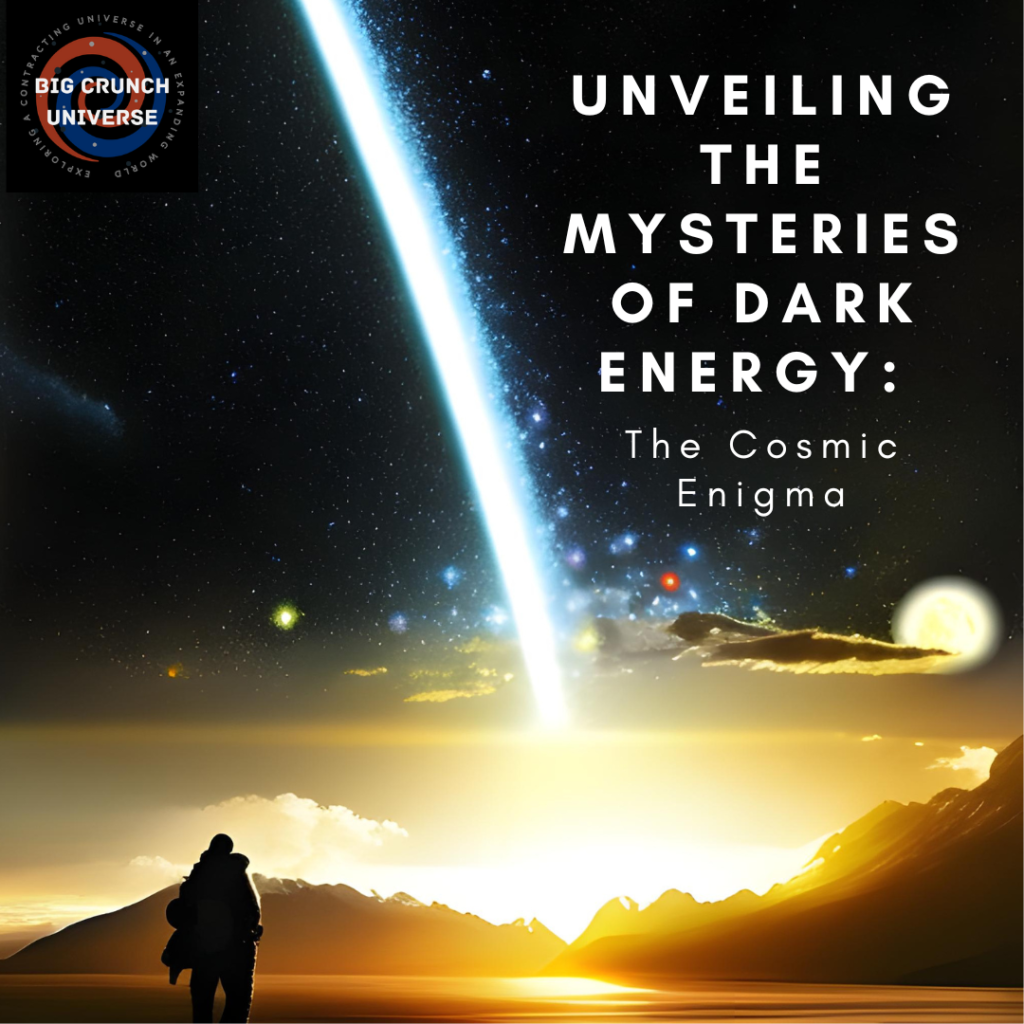Unveiling the Mysteries of Dark Energy: The Cosmic Enigma
Welcome, cosmic enthusiasts, to our journey through the depths of the universe! Today, we embark on an exploration of one of the most perplexing phenomena known to humanity: dark energy. Strap on your intergalactic seatbelts as we unravel the secrets of this enigmatic force that drives the expansion of our universe.

What is Dark Energy?
Dark energy is a mind-boggling concept in astrophysics that defies conventional understanding. In simple terms, it is a hypothetical form of energy that permeates all of space and exerts a repulsive gravitational force, causing the universe to expand at an accelerating rate. Unlike matter and dark matter, dark energy does not clump together or interact with electromagnetic radiation, making it invisible and incredibly difficult to detect.
The Discovery:
The existence of dark energy came to light in the late 1990s when astronomers were studying the brightness of distant supernovae, exploding stars in distant galaxies. They expected the expansion of the universe to be slowing down over time due to gravity. However, the observations revealed the opposite: the universe was expanding at an accelerating pace. This astonishing revelation led to the realization that an unknown force, later dubbed dark energy, was counteracting gravity on cosmic scales.
Understanding the Expansion:
To understand how dark energy affects the expansion of the universe, we need to delve into Einstein’s theory of general relativity. According to this theory, the curvature of spacetime is influenced by the distribution of matter and energy. In the case of a positive cosmological constant, a term in Einstein’s equations associated with dark energy, the fabric of spacetime stretches as the universe expands. This expansion causes galaxies to move away from each other at an ever-increasing rate, akin to the inflation of a balloon.
The Puzzle Deepens:
Despite its name, dark energy remains shrouded in mystery. Scientists have proposed various hypotheses to explain its origin, including the possibility that it arises from quantum fluctuations in empty space or a new fundamental force. However, the precise nature of dark energy remains elusive, leaving researchers puzzled.
Measuring Dark Energy:
While dark energy itself cannot be directly observed, its effects can be inferred through observations of cosmic phenomena. Scientists employ a variety of methods, such as mapping the large-scale structure of the universe, measuring the cosmic microwave background radiation, and studying the motion of galaxies and galaxy clusters. These observational data provide clues about the behavior of dark energy and its influence on the universe’s expansion.
Implications and Future Research:
Understanding dark energy is crucial for our comprehension of the fate of the universe. If dark energy continues to accelerate the expansion, it may lead to the “Big Rip,” a scenario in which galaxies, stars, and even atoms are torn apart by the ever-increasing cosmic expansion. On the other hand, if dark energy weakens over time, the universe could experience a “Big Freeze” or a “Big Crunch.”
To shed light on this cosmic conundrum, scientists are conducting experiments and refining observational techniques. The Dark Energy Survey, the Large Synoptic Survey Telescope, and the European Space Agency’s Euclid mission are among the initiatives aiming to deepen our understanding of dark energy.
Conclusion: Dark energy presents an extraordinary cosmic mystery that challenges our current understanding of the universe. But perhaps the original theory of a contracting universe could explain the physics of the universe without the concept of dark energy?